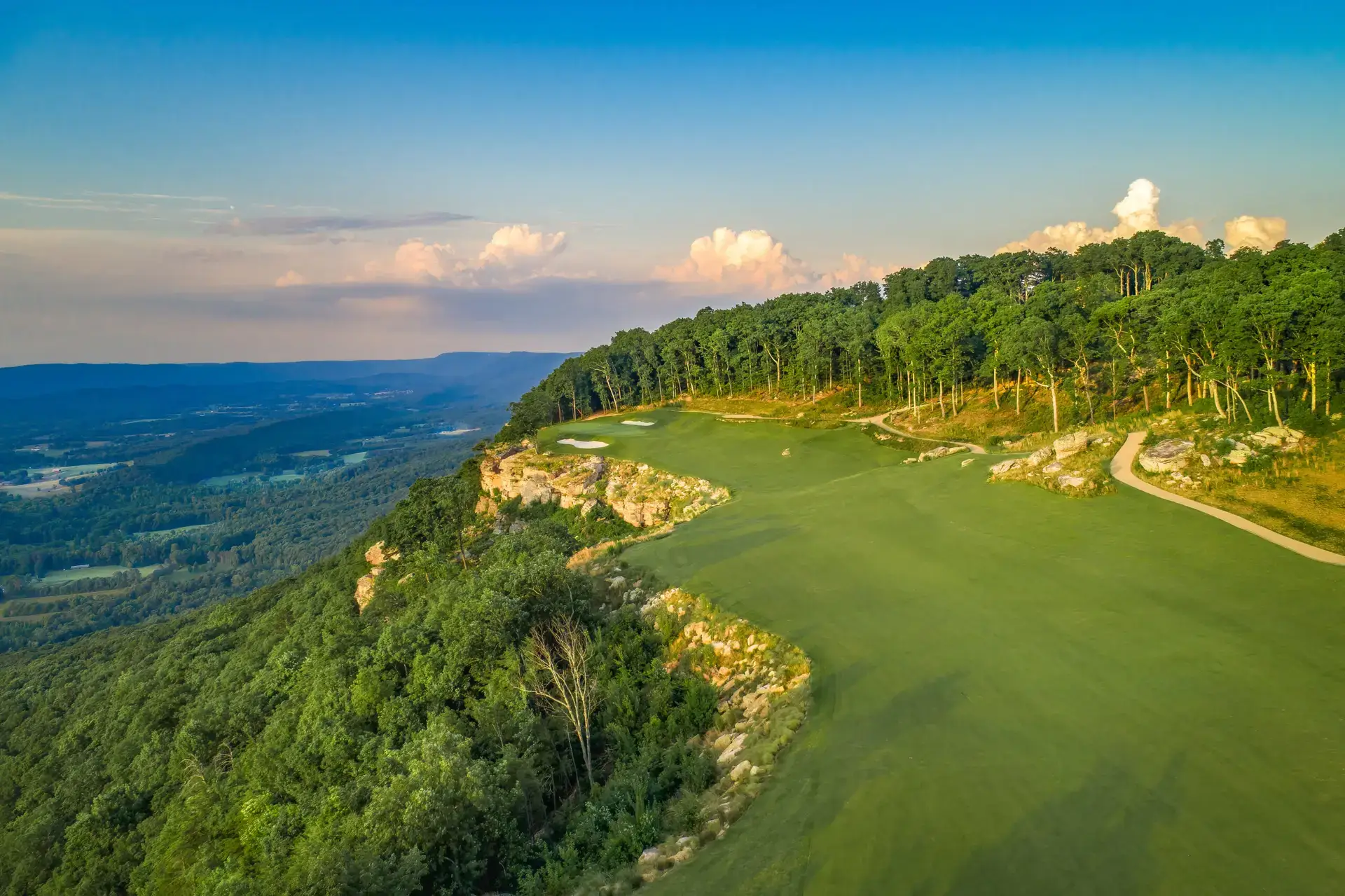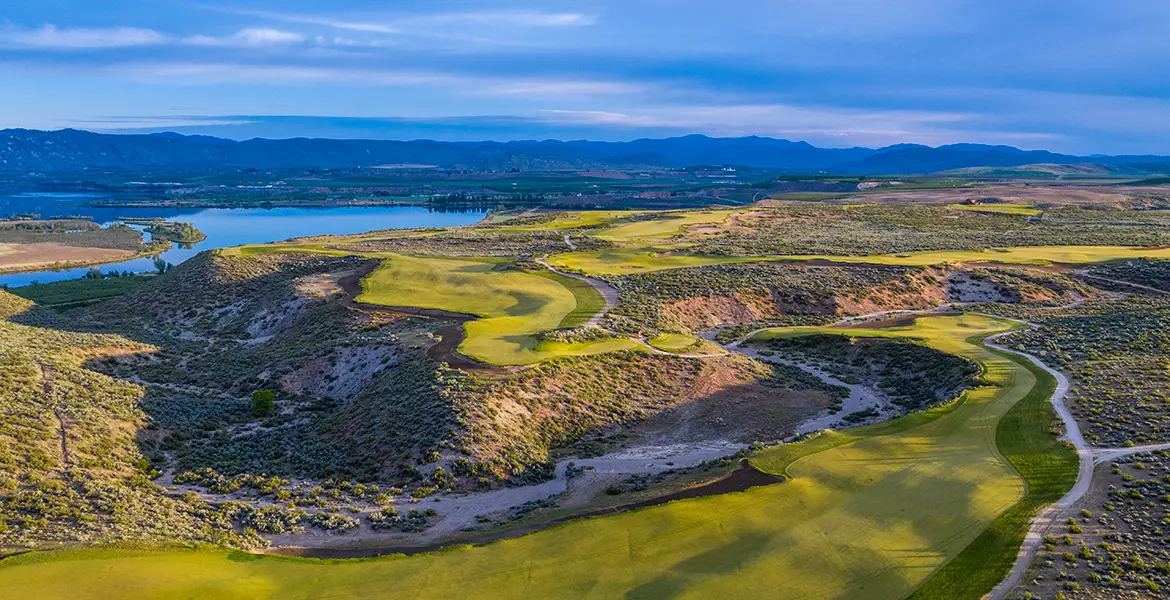How a dangerous descent yielded a signature hole for Georgia’s McLemore Resort
Rising Fawn, Ga., isn’t in every road atlas, but with one bold move, architect Bill Bergin put mapmakers on notice. Called upon by new owner Scenic Land Company to renovate the old Canyon Ridge Golf Club in the mountains of northwest Georgia, Bergin teamed with Rees Jones for a comprehensive overhaul of the golf course, which reopened as McLemore in 2019. Now known as the Highlands at McLemore, the much-improved layout may well have continued to dwell in rural anonymity but for a stunning discovery of a new green site for the 18th hole during the renovation. Fame soon followed, with one leading publication calling McLemore’s closer the best 18th hole built since 2000 and another listing it as one of the top 10 finishing holes in the world. Here’s the backstory.
The course began life in June 2005 as Canyon Ridge, a Rick Robbins design meant to serve as the centerpiece of a residential community. “The existing course was pretty good,” says Bergin. “It kind of got lost in the recession of 2008 through 2010 and really came out poorly on the other end of that.”

After the new developer changed the property’s name to McLemore in 2017, Bergin came aboard to renovate the golf course. Jones advised and collaborated on the 17 renovated holes, but Bergin can claim sole authorship of the one brand-new hole, the final one.
“We had a problem,” recalls Bergin. “We didn’t have room for a clubhouse on this golf course and we had a woefully inadequate parking lot. Roland Abert, the land planner, realized that if we put the clubhouse where it was originally intended, you’d be able to see the mountains in the distance, but you’d have no edge—no downward view. The whole place was about looking down into McLemore Cove, hence the name McLemore. They came to me and asked, ‘Can we move the 18th hole? Can you check that out?’ So it’s a 100-foot drop, 400-foot eastern shift to the golf hole, and it’s a 3-to-1 slope of trees and rocks and nasty stuff, briars.
“I went down the hill and I found a reasonably decent green site pretty easily. It was then I realized I could do a short par four here. Building the rest of the hole was incredibly difficult, having to cut and blast the rock on the right side to fill out the left side. It created one of the most dramatic locations for a golf hole in America.”
Amid the rocks and brambles, Bergin found a shelf for his green site. He built up a cliffside fairway bracketed by forested hillside to the right and a plunging drop-off to the left. From the left edge of the slightly raised green, it’s a 1,200-foot pure “wow” drop to the floor of McLemore Cove. As 435-yard journeys go, it’s unforgettable.
“The old 18th was a fine, 420-yard par four,” explains Bergin, “but the uphill tee shot was somewhat blind, with a creek crossing and rock croppings in the fairway. There was nothing wrong with the hole, actually, but the new hole being pushed down opened up so many nice things for the clubhouse, a Himalayas putting green, a six-hole short course [built on the site of the old 18th], and parking. It solved all kinds of problems for the campus.”
Considerable attention currently centers on McLemore’s next golf course, The Keep, another co-design by Bergin and Jones: Early reviewers have gushed about its merits ahead of the formal grand opening in September 2025. Bergin acknowledges that without the fanfare and accolades accorded to that one golf hole on the Highlands course, it’s unlikely a resort hotel or second course would have been in the offing.
“The new 18th [at the Highlands] put us on the map,” says Duane Horton, president of Scenic Land Company. “I will never forget the day Bill went over the edge of our upper plateau and disappeared into the thick woods and underbrush, only to pop up later with scratches from briars, soaked in sweat, and the biggest smile, saying, ‘We are going to make it happen.’”
Happen it did. Rising Fawn, McLemore, and Bergin are now all very much on the map.






